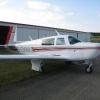M20J Carbon Monoxide, Need help !
-
Members Online
- Vulcan81
- Igor_U
- ragedracer1977
- mluvara
- Vintagevalves
- Stealth Mooney
- NickG
- Raistlin
- rwabdu
- ajudson
- Art21
- TCC
- Parker_Woodruff
- Fly Boomer
- Slick Nick
- Red Leader
- atpdave
- Ragsf15e
- redbaron1982
- Flyler
- DMM
- Guillaume
- bluehighwayflyer
- A64Pilot
- gwav8or
- pkellercfii
- TangoTango
- theoriginalturk
- eman1200
- varlajo
- hammdo
- ElkoRandy20J
- ArtVandelay
- Rmnpilot
- flyfast
- 802flyer


Recommended Posts
Join the conversation
You can post now and register later. If you have an account, sign in now to post with your account.